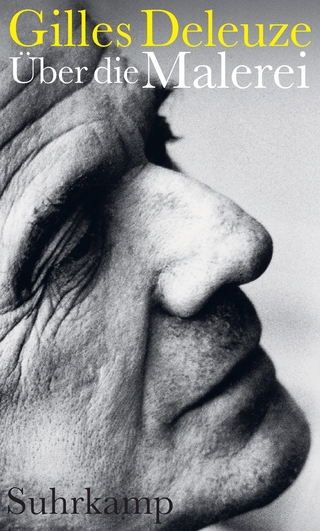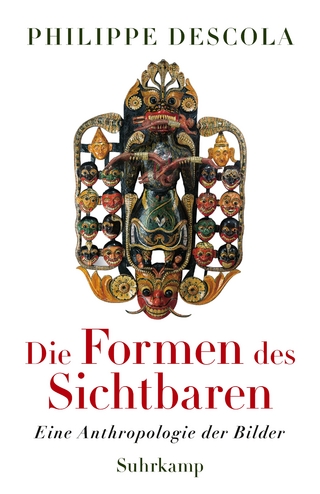
The Art Experience
An Introduction to Philosophy and the Arts
Seiten
2024
Routledge (Verlag)
978-1-032-69367-5 (ISBN)
Routledge (Verlag)
978-1-032-69367-5 (ISBN)
This book takes readers on a journey that explores a series of fundamental questions about the nature of art and aesthetic value, showing how philosophical theories can affect our real-world experiences with many different mediums of art.
The Art Experience: An Introduction to Philosophy and the Arts takes readers on an engaging and accessible journey that explores a series of fundamental questions about the nature of art and aesthetic value. The book’s 12 chapters explore three questions:
What makes something a work of art?
How should we experience art to get the most out of it?
Once we understand art, how should we evaluate whether it is good or bad?
Philosophical theory is illustrated with concrete examples: the paintings of Frida Kahlo, the music of Johann Sebastian Bach, the masks of the Nso people, and many others. Classic questions are balanced with cutting-edge challenges, such as Linda Nochlin’s work on the exclusion of women from the artistic canon.
The Art Experience presupposes no prior knowledge of philosophy or art, and it will be of interest to any reader seeking an accessible and engaging introduction to this field. Along the way, readers learn how philosophical theories can affect our real-world experiences with painting, music, theater, and many other art forms.
Key Features
Accessible for any college student: assumes no knowledge of philosophy, art theory, or any artistic medium
Organizes topics conceptually, rather than historically, allowing students to more easily grasp the core issues themselves rather than tracing their historical evolution
Offers readers a large number of contemporary examples and a consistent focus on the way theory can affect people’s real-world experiences with art
Explores questions about bias – for example, whether the artistic canon has excluded some groups unfairly and whether definitions of art are Western-biased
The Art Experience: An Introduction to Philosophy and the Arts takes readers on an engaging and accessible journey that explores a series of fundamental questions about the nature of art and aesthetic value. The book’s 12 chapters explore three questions:
What makes something a work of art?
How should we experience art to get the most out of it?
Once we understand art, how should we evaluate whether it is good or bad?
Philosophical theory is illustrated with concrete examples: the paintings of Frida Kahlo, the music of Johann Sebastian Bach, the masks of the Nso people, and many others. Classic questions are balanced with cutting-edge challenges, such as Linda Nochlin’s work on the exclusion of women from the artistic canon.
The Art Experience presupposes no prior knowledge of philosophy or art, and it will be of interest to any reader seeking an accessible and engaging introduction to this field. Along the way, readers learn how philosophical theories can affect our real-world experiences with painting, music, theater, and many other art forms.
Key Features
Accessible for any college student: assumes no knowledge of philosophy, art theory, or any artistic medium
Organizes topics conceptually, rather than historically, allowing students to more easily grasp the core issues themselves rather than tracing their historical evolution
Offers readers a large number of contemporary examples and a consistent focus on the way theory can affect people’s real-world experiences with art
Explores questions about bias – for example, whether the artistic canon has excluded some groups unfairly and whether definitions of art are Western-biased
Alex Rajczi teaches at Claremont McKenna College, where he is the Deborah and Kenneth Novack ’67 Professor of Ethics and Leadership and a George R. Roberts Fellow. He is the author of The Ethics of Universal Health Insurance (Oxford UP, 2019).
Acknowledgements Introduction Part 1: Defining Art 1. Trying to Define Art 2. Functional Definitions of Art 3. Non-Functional Definitions of Art 4. The Possibility of Bias 5. Choosing a Definition Part 2: Experiencing Art 6. Selecting Art to Spend Time On 7. The Aesthetic Attitude 8. Viewpoint in Visual Art 9. Interpretation Part 3: Evaluating Art 10. Art and Knowledge 11. Art and Morality 12. Subjectivity and Objectivity References Index
| Erscheinungsdatum | 21.04.2024 |
|---|---|
| Zusatzinfo | 1 Tables, black and white; 16 Halftones, black and white; 16 Illustrations, black and white |
| Verlagsort | London |
| Sprache | englisch |
| Maße | 152 x 229 mm |
| Gewicht | 630 g |
| Themenwelt | Kunst / Musik / Theater ► Allgemeines / Lexika |
| Kunst / Musik / Theater ► Kunstgeschichte / Kunststile | |
| Geisteswissenschaften ► Philosophie | |
| ISBN-10 | 1-032-69367-3 / 1032693673 |
| ISBN-13 | 978-1-032-69367-5 / 9781032693675 |
| Zustand | Neuware |
| Informationen gemäß Produktsicherheitsverordnung (GPSR) | |
| Haben Sie eine Frage zum Produkt? |
Mehr entdecken
aus dem Bereich
aus dem Bereich
Vorlesungen März-Juni 1981 : die legendären Vorlesungen des großen …
Buch | Hardcover (2025)
Suhrkamp (Verlag)
38,00 €
eine Anthropologie der Bilder
Buch | Hardcover (2023)
Suhrkamp (Verlag)
68,00 €


